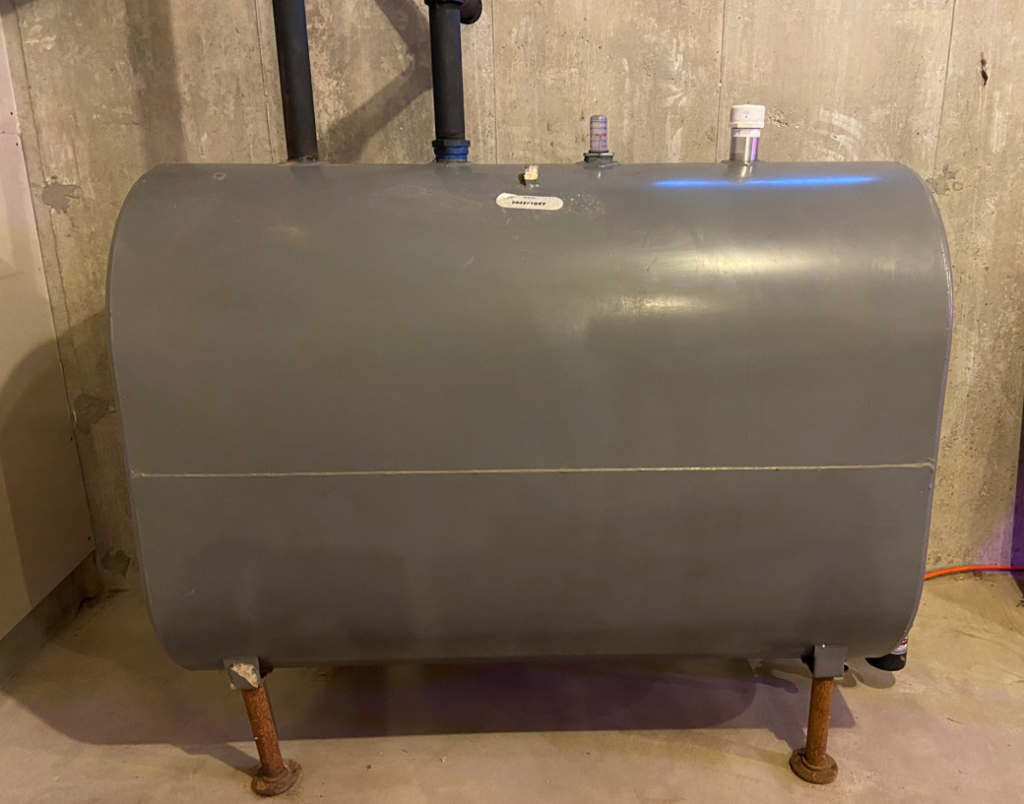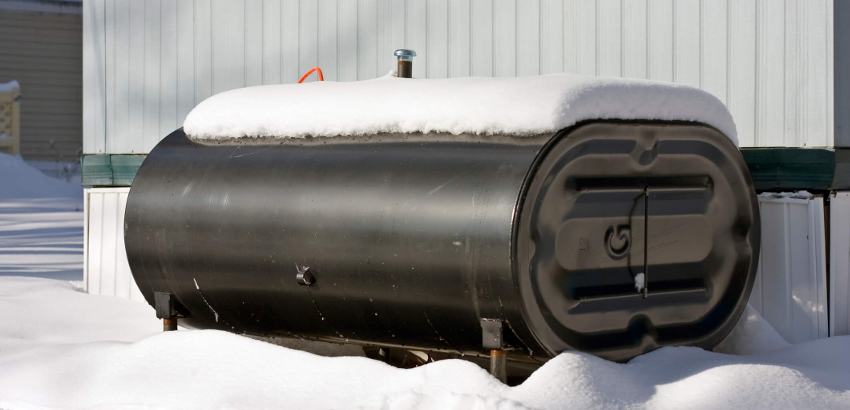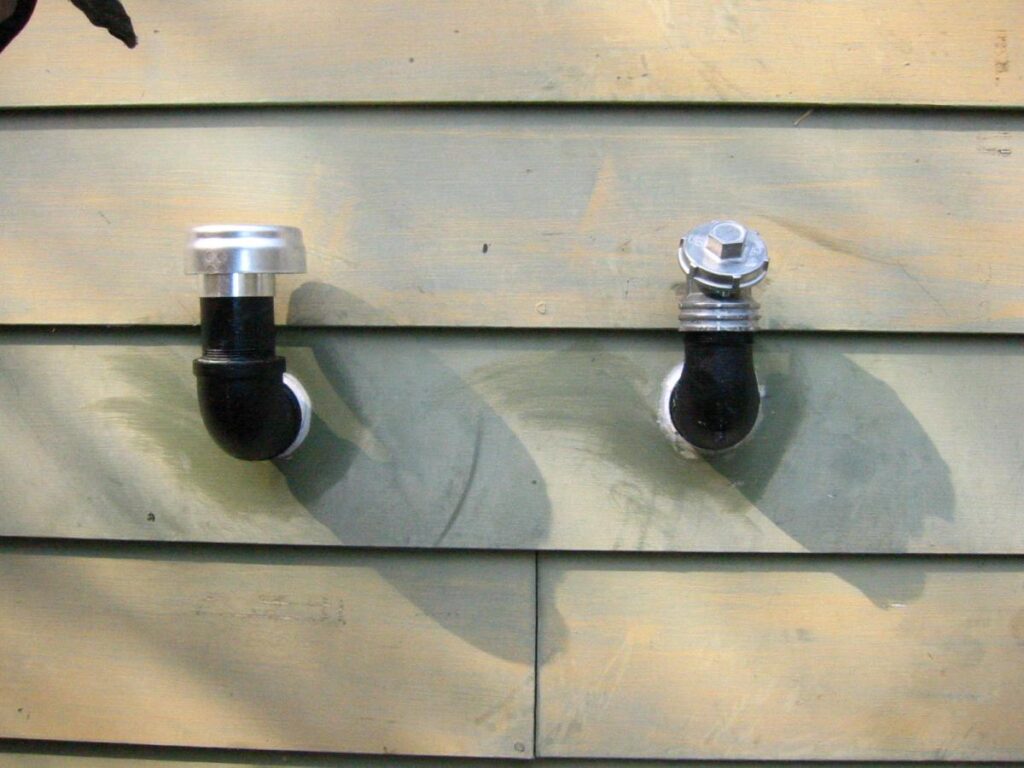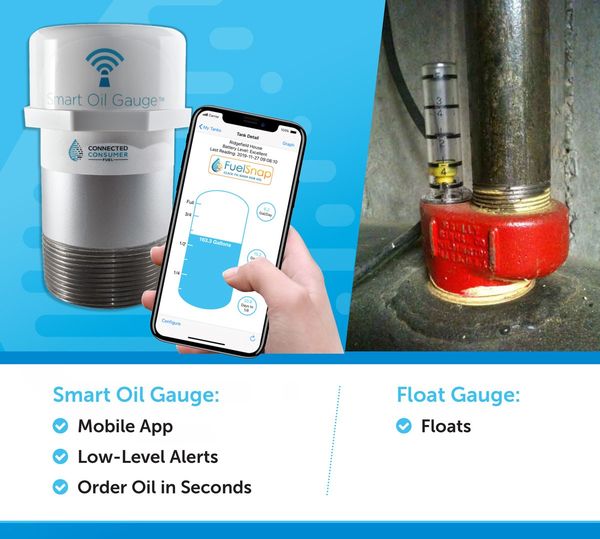In this article, I’m going to give you the rundown on everything you need to know about heating oil. It’s one of the most efficient forms of keeping your home warm. Most heating oil users tend to consider it to be one of the safest and most reliable forms of home heating in the northern US. With the ability to produce more BTUs than propane, it has risen in popularity significantly in the past few years. There are hundreds of different heating oil providers in the Northeast alone, so prices tend to fluctuate a lot to remain competitive.
If you are relatively new to heating oil, then there are quite a few things to know. In this article, we’ll be going over all of the important information to know. Including the most cost-effective ways to keep track of your supply of heating oil! That way, you will make sure that you never run out!
How is Heating Oil Stored?
Heating Oil Is Stored in an oil tank that is usually located somewhere on your property! Normally it’s located in your basement or garage. Sometimes, its even located outside above ground. Although there is the occasional underground tank, but they aren’t that common nowadays. If you still have an underground oil tank, you must replace it ASAP. This is because these tanks in particular are more prone to leaks which can cause an expensive environmental disaster if not found soon enough. We go more in-depth on this topic in particular in our article on removing your underground oil tank.
The safest and best way to keep an oil tank is in an above ground tank that ideally, is stored inside. Indoor tanks are not exposed to the elements of the outdoors. That allows these tanks to last longer than outdoor tanks. They won’t become rusted or damaged from snow, rain or direct sunlight. That will allow the indoor tank to have a longer lifespan than outdoor tanks.


How does Heating Oil get Delivered?
The only way to get heating oil delivered to your home is by a truck. There is no underground network of pipes that deliver the oil directly to homes like with natural gas. Due to this, the truck must deliver oil to your home, connect to the fill pipe and fill your tank through there.
Usually when the truck arrives, the first thing the driver will do is find your fill pipe. Typically, your fill pipe will normally be located on the side of your house for an indoor tank While for outdoor tanks, the pipes normally stick up from the top of the tank.
After the driver has connected his truck with your fill pipe, he will begin pumping. As he is pumping oil into your tank, he will keep an ear out for a whistling sound coming from your vent pipe (usually located next to the fill pipe). The whistle will make a sound to indicate that air is leaving the tank as he’s pumping oil into it. If you’re interesting in a more in depth delivery process, please check out our article on How to Fill a Home Heating Oil Tank.

How To Order Heating Oil
I can’t call this Heating Oil 101 if I don’t tell you how to order oil! There are three types of methods to deliver oil from. These will offer you three consistent ways of getting an oil delivery to your home!
- Automatic Delivery: This is when you make a deal with your oil provider to deliver oil to you consistently. When doing this, you are locked into a set price determined by the dealer. Based upon your usage and outside temperature, they will come and deliver to your home based upon their availability. This is a very limiting form of delivery and you are usually paying the more expensive prices.
- Will Call/On-Demand: Easily the more cost-effective method of ordering oil. You will not have any restrictions on where and who you order from! You will unfortunately have to check your tank every so often and order oil online to schedule your next delivery. You will be able to order whenever you want, and can even pay with cash or card, as well as avoiding random deliveries!
- Will Call with Smart Oil Gauge: This one will give you the best of both worlds when it comes to heating oil delivery. You will get the peace of mind that comes with automatic delivery and the cost effectiveness of will call. You can use the Smart Oil Gauge’s app to order oil as well as to keep track of your oil level! The Smart Oil Gauge is a useful tool to help you keep track of your oil level and manage your deliveries!

What Happens if You Run Out of Oil?
If you run out of heating oil, it’s not the end of the world. There are four steps to follow if you were to run out of heating oil:
- Make sure to check that you’re actually out of heating oil.
- Order Oil! It’s important to go online and make sure that you have a delivery scheduled sometime soon! Make sure to call the dealer as well to make sure that your order was received!
- Stop off at the gas station and get 5-10 gallons of diesel to hold you over.
- Restart your burner by pressing the restart button
Do you Have to Be Home for Your Oil Delivery?
This doesn’t happen with all dealers, but some dealers do require a one-time inspection of your tank. This is for both your protection and theirs. They check to make sure that your tank is sturdy enough to receive a delivery. They also check to make sure that your tank has no leaks or protentional issues that could arise during the fill process. However, some companies will only require photos of the tank prior to your first delivery with them.
Additionally, it’s always a good thing to inspect your own tank from time to time. We go over the steps to inspecting your tank in this post here.
Conclusion
There’s a lot to unpack here. For that reason, it might be best to read this over a few times just to make sure you got all in the information that you need! Heating Oil is overall a great asset to have as your main source of heating in your home. It mostly sees usage to heat your home, as well as for hot water.
Additionally, with all the technology we have at our disposal, we can be a bit more flexible and do more research before we come to make big decisions such as signing up for automatic delivery!
I hope you enjoyed my Heating Oil 101! You’re now ready for this coming winter and have enough information to start your preparations!
Happy Heating,
Hunter



